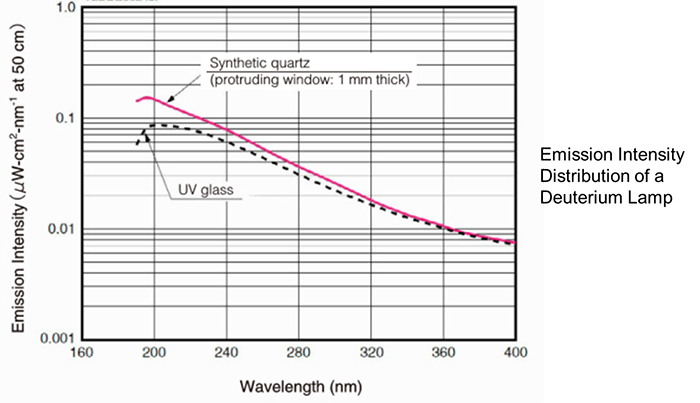What is the energy distribution of a deuterium lamp?

A deuterium lamp is a discharge light source with high pressure (several hundred Pa) of deuterium sealed in a bulb. As it uses a hot cathode to achieve stable and reliable arc discharge, approximately 10 seconds for preheating is required before starting the discharge. A deuterium lamp requires a large and complex power supply, making it more expensive than a halogen lamp. However, it is one of the few continuous spectrum light sources that is stable in the ultraviolet range.
The deuterium lamp has a short emission wavelength of 400 nm, or less. The window material limits its use at the short wavelength end. The figure here shows examples using synthetic quartz and UV glass.
The use at the long-wavelength end is limited to about 400 nm. However, the low degree of attenuation toward the long- wavelength end permits use of light above 400 nm. Multiple emission spectra also exist in the range at 400 nm and above. Of these, the spectra at 486.0 nm and 656.1 nm are particularly strong and can be used for wavelength calibration of the spectrophotometer.


